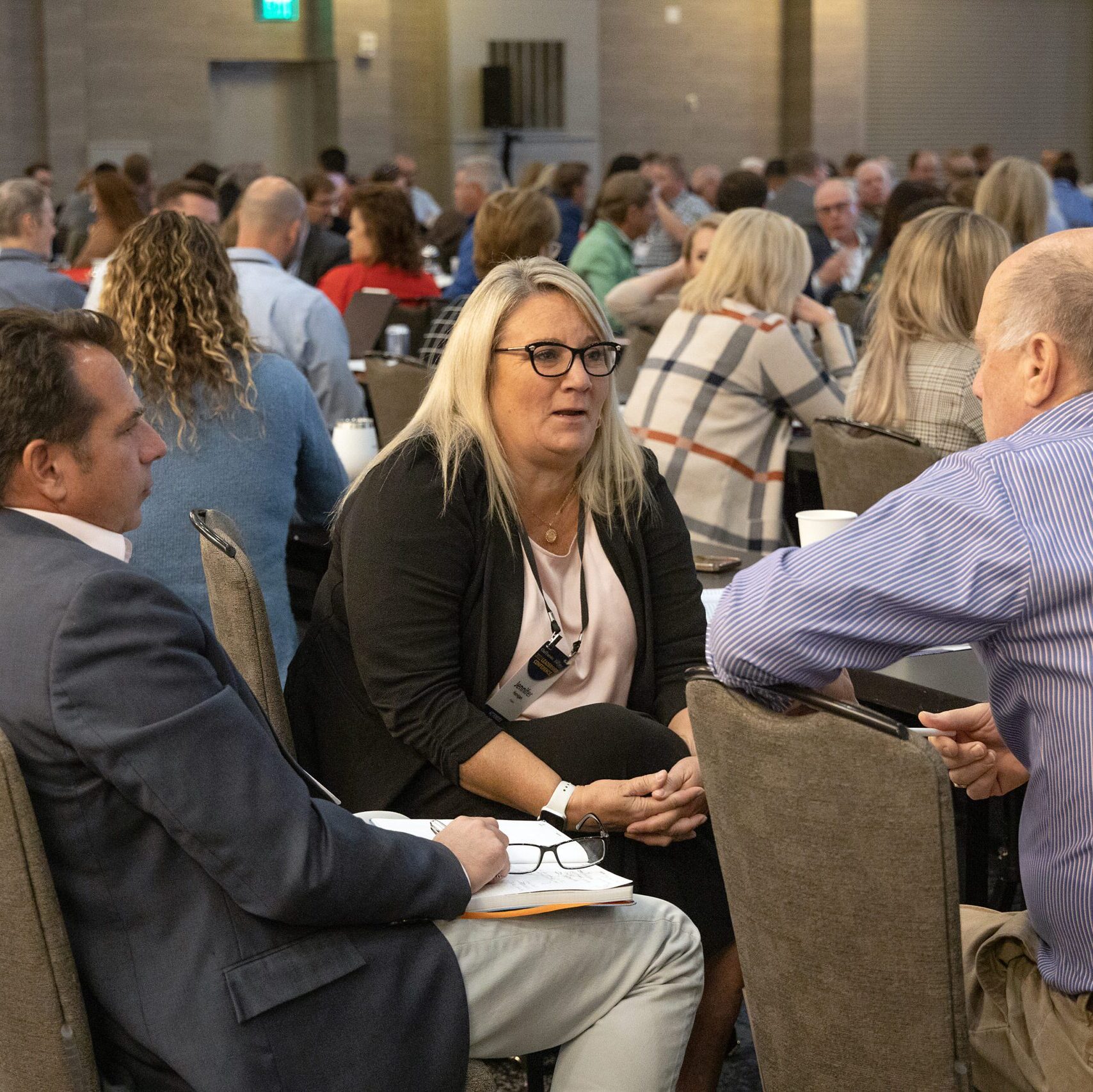


Succession planning is having a moment. From Warren Buffet at Berkshire Hathaway to Jamie Dimon at JPMorgan Chase, CEO transitions are front-page news. Yet these carefully orchestrated announcements mask an undeniable reality: few organizations sufficiently prioritize succession planning, a serious oversight with rising C-Suite churn.
According to the executive intelligence firm Equilar, average tenure for S&P 500 chief executives has declined 34 percent since 2017, with CEO exits jumping 20 percent in the second half of 2024. Data from outplacement services firm Challenger, Gray & Christmas have confirmed this trend, showing record numbers of CEO departures in 2025.
These exits often have massive, negative organizational impacts, especially when unplanned or improperly managed. They can foster misalignment at the executive level, limit performance and outcomes and erode trust and engagement among team members. The shock waves are especially damaging to organizations with growth mandates, like those backed by private equity firms, as well as industries that are heavily dependent on their people, like healthcare.
While not all CEO transitions can be anticipated, today’s top leaders are experiencing high levels of burnout, with many exploring professional alternatives or retirement. This further highlights the increasing need for organizations to, at long last, prioritize succession planning and thoughtful transitions.
But with limited room for error in the current climate, it’s insufficient to pull a standard playbook from the shelf. Companies need guidance that reflects today’s realities and—more than anything—the active involvement of CEOs, both outgoing and incoming.
Top leaders planning departures should start the process early, engaging their boards and other key stakeholders at the very start and keeping them informed. They’ll need a long runway and various perspectives to best consider the full dimensions of their exits, including business needs, people and culture impacts, timing and the leadership attributes and capabilities needed to vault organizations to next levels of growth.
Once they identify or finalize their successors, outbound CEOs should bring them under the tent and advance the work of developing transition plans together. This planning should detail how the organization will maintain and accelerate momentum, outlining early value drivers and measurable milestones. It should also include the recommendations of other management leaders, who should be informed of the upcoming transition before the organization begins publicizing the announcement internally or externally.
As they get close to their exit, outbound CEOs should plan to co-lead organizations together with their successors for discrete periods of time, leveraging the overlap to ensure redundancies and maintain the continuity of the company narrative. Executives should make sure they each have clear accountabilities to smooth the path for decision making and plan to make adjustments, as needed. They should also prepare for the process of fully letting go and embracing what’s next, which can be difficult, especially among founders.
CEO successors have a different set of challenges, often rooted in human beings’ natural resistance to change. To overcome such instincts, they should bring together team members early to begin normalizing the organizations’ evolutions while sharing strategic plans and milestones. An emphasis should be placed on honoring the reality of shifting leadership cultures, giving people time to adjust and encouraging feedback.
At the same time, new CEOs should quickly advance an internal communications cascade, appropriately segmented for members of their workforce while rooted in shared messaging. Efforts should reflect best practices with regard to meeting human needs amidst change—for example, the SCARF model that emphasizes status, certainty, autonomy, relatedness and fairness.
In addition, inbound CEOs should plan to gauge their progress early and often, looking for ways to make improvements and building on their successes. To accomplish this, they should make certain communications are bi-directional and seek out organizational truth tellers versus “yes men.”
Outbound and inbound CEOs alike must further contend with the reality that mistrust of “traditional” leaders is rising. In response, they should guard against any assumptions that their stature will automatically inspire confidence and instead seek to proactively foster greater levels of trust. They can best accomplish this by embodying and promoting values of accessibility, authenticity and transparency while keeping a close eye on employee engagement.
All organizations face the looming prospect of CEO transitions regardless of their size, industry or ownership. Their leaders and investors must ultimately choose whether to actively prepare for such changes or invite great risk during an already uncertain time.



0

1:00 - 5:00 pm
Over 70% of Executives Surveyed Agree: Many Strategic Planning Efforts Lack Systematic Approach Tips for Enhancing Your Strategic Planning Process
Executives expressed frustration with their current strategic planning process. Issues include:
Steve Rutan and Denise Harrison have put together an afternoon workshop that will provide the tools you need to address these concerns. They have worked with hundreds of executives to develop a systematic approach that will enable your team to make better decisions during strategic planning. Steve and Denise will walk you through exercises for prioritizing your lists and steps that will reset and reinvigorate your process. This will be a hands-on workshop that will enable you to think about your business as you use the tools that are being presented. If you are ready for a Strategic Planning tune-up, select this workshop in your registration form. The additional fee of $695 will be added to your total.

2:00 - 5:00 pm
Female leaders face the same issues all leaders do, but they often face additional challenges too. In this peer session, we will facilitate a discussion of best practices and how to overcome common barriers to help women leaders be more effective within and outside their organizations.
Limited space available.

10:30 - 5:00 pm
General’s Retreat at Hermitage Golf Course
Sponsored by UBS
General’s Retreat, built in 1986 with architect Gary Roger Baird, has been voted the “Best Golf Course in Nashville” and is a “must play” when visiting the Nashville, Tennessee area. With the beautiful setting along the Cumberland River, golfers of all capabilities will thoroughly enjoy the golf, scenery and hospitality.
The golf outing fee includes transportation to and from the hotel, greens/cart fees, use of practice facilities, and boxed lunch. The bus will leave the hotel at 10:30 am for a noon shotgun start and return to the hotel after the cocktail reception following the completion of the round.